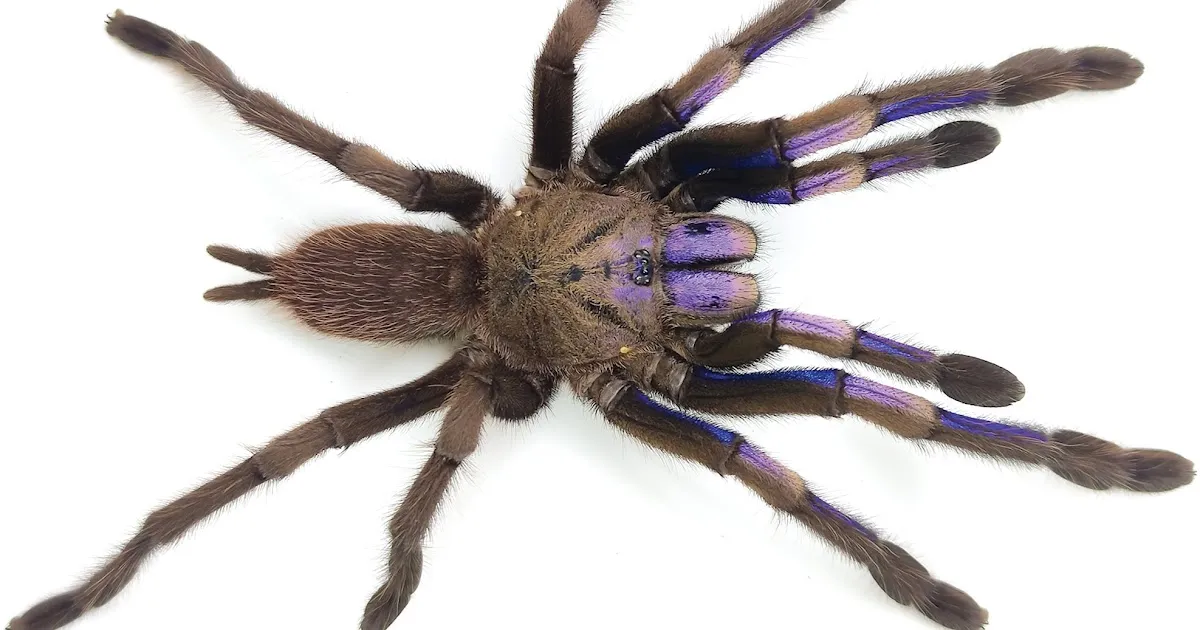What is a Blue Tarantula?
The term “blue tarantula” encompasses several species of tarantulas that exhibit striking blue coloration. These spiders are not a single species but rather a group of arachnids admired for their vibrant hues and unique characteristics. Their allure has made them popular among enthusiasts and a subject of fascination in the scientific community. These spiders are part of the Theraphosidae family and are typically found in tropical and subtropical regions. The intensity of their blue coloration varies depending on the species, age, and even the lighting conditions. Understanding the basic facts about blue tarantulas is essential before delving deeper into their specifics.
Appearance and Characteristics
Blue tarantulas are immediately recognizable for their vivid blue coloration, which distinguishes them from many other tarantula species. This color is not due to pigment but rather structural coloration. The microscopic structures on their hairs reflect light in a way that produces the blue appearance. Their bodies are typically covered in fine hairs (setae), which give them a velvety texture. Depending on the species, the shade of blue can range from a light, almost electric blue to a deeper, more indigo hue. Size varies among species, but most blue tarantulas are of medium size, with leg spans ranging from 5 to 7 inches. They also possess the typical features of tarantulas, including eight legs, two body segments (cephalothorax and abdomen), and chelicerae (fangs).
Identifying Features

Identifying blue tarantulas involves more than just their color. The presence and shade of blue, the size and shape of the spider, and even the patterns on their legs and bodies are critical. For example, some species may have blue legs but a brown body, while others may exhibit a more consistent blue throughout. It’s important to note that juvenile tarantulas may not display their full adult coloration. The specific habitat of the tarantula can also be an indicator of its species, as different types are found in different geographical locations. Careful observation of these features is essential for accurate identification, and consulting field guides or expert opinions is always a good idea.
Habitat and Distribution of Blue Tarantulas
Blue tarantulas are primarily found in the tropical and subtropical regions of the world. They thrive in environments that provide the right combination of humidity, temperature, and suitable shelter. These spiders are not evenly distributed; instead, they occupy specific habitats where conditions are optimal for their survival and reproduction. The geographic distribution of blue tarantulas is often linked to the presence of specific vegetation, soil types, and climate patterns.
Where Do They Live?
Blue tarantulas generally inhabit burrows in the ground, under rocks, or among the roots of trees. They prefer environments where they can create or find sheltered spaces to hide from predators and regulate their body temperature. Some species may also be found in humid forests, grasslands, or even semi-arid regions, depending on their specific adaptations and requirements. Their choice of habitat is influenced by factors such as the availability of prey, the soil type (which affects burrowing), and the presence of potential threats.
Popular Habitats

Popular habitats include the rainforests of Southeast Asia, where several species are found, including the vibrant Cobalt Blue Tarantula (Cyaneopubescens). Other species are native to regions of Central and South America, where they can be found in various forest types. Understanding the popular habitats of each species is key to both studying and conserving these creatures. Changes in these environments, such as deforestation or climate change, can severely impact their populations, so protecting their natural habitats is of utmost importance.
How to Find Blue Tarantulas
Finding blue tarantulas in their natural habitat requires patience, knowledge, and a bit of luck. Since these spiders are often nocturnal and secretive, knowing their preferred habitats and behaviors is crucial. Proper equipment and a respectful approach to the environment are essential for observing these creatures without causing harm.
Best Times to Search
The best times to search for blue tarantulas are typically during the warmer, more humid months when they are most active, and after rainfall when they may come out to hunt. Dusk and night are usually the optimal times, as many species are nocturnal hunters. Careful planning, including checking weather conditions, is important. Also, remember to respect the spiders’ environment and avoid disturbing their burrows unnecessarily.
Tips for Observing in the Wild
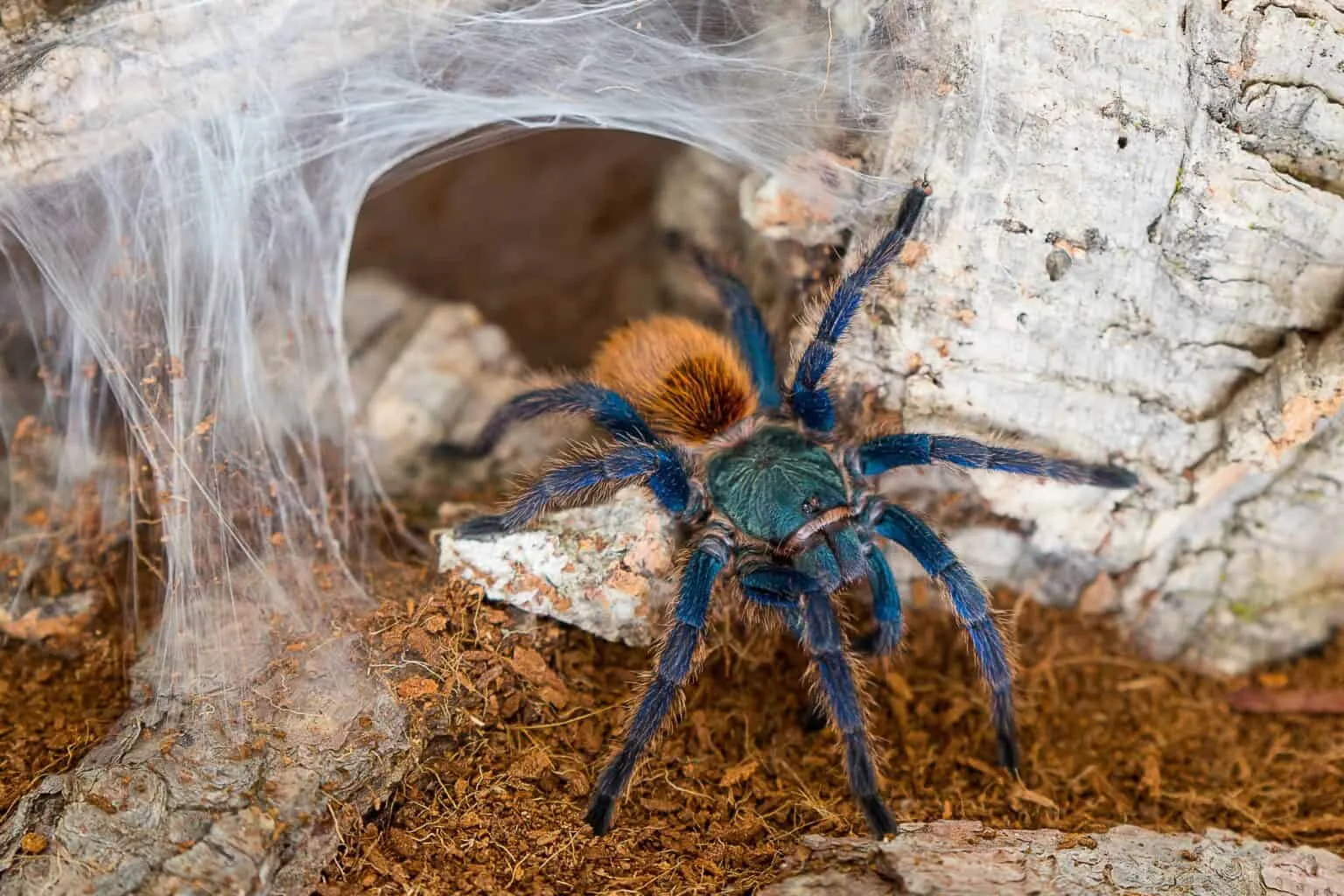
Observe from a distance. Use binoculars or a camera with a good zoom to avoid disturbing the tarantulas. Be quiet and move slowly to minimize the risk of scaring them away. Be aware of your surroundings, as blue tarantulas often live in areas that may also be home to other wildlife. Never attempt to handle a blue tarantula without proper knowledge and equipment. Always respect their space, and remember that these spiders are wild animals, not pets. It is important to follow local guidelines and regulations to protect both yourself and the tarantulas.
Blue Tarantula Diet and Feeding Habits
Blue tarantulas are carnivorous predators, and their diet consists primarily of insects and other invertebrates. The specific prey items vary depending on the tarantula species, its size, and the availability of food in its habitat. These spiders have evolved specialized hunting techniques and feeding habits to thrive in their environment.
What do they eat?
The main part of their diet consists of insects such as crickets, grasshoppers, cockroaches, and beetles. Larger species may also prey on small vertebrates like lizards or mice. The tarantula will typically ambush its prey, using its fangs (chelicerae) to inject venom that immobilizes the victim. After the prey is subdued, the spider will use enzymes to liquefy the insides of the prey, and then suck up the nutritious liquid. The undigested parts of the prey are left behind.
Feeding Frequency and Methods
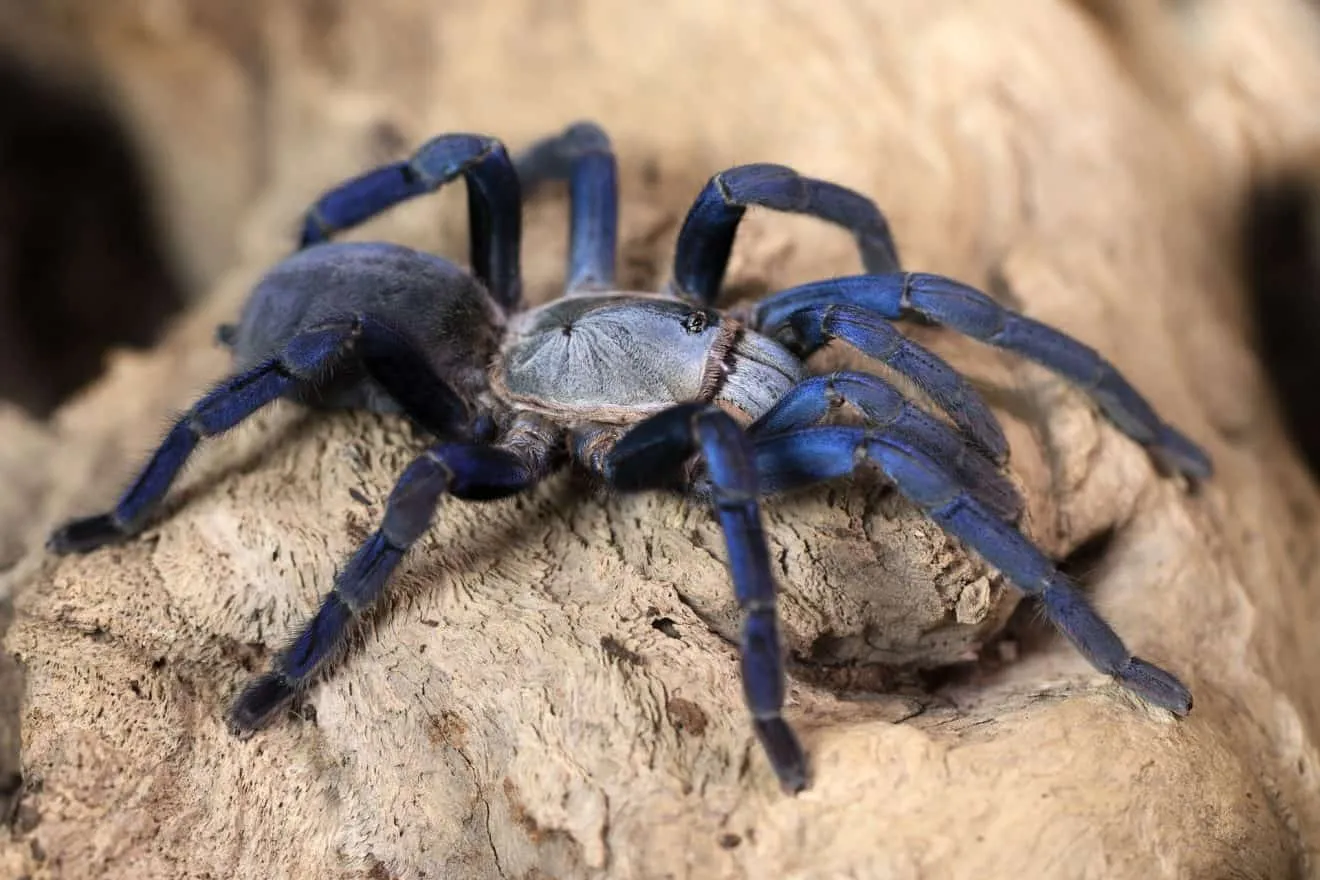
Feeding frequency depends on the tarantula’s age, size, and metabolism. Juvenile tarantulas need to eat more frequently than adults, sometimes several times a week. Adult tarantulas can survive for extended periods without eating, often weeks or even months. In captivity, feeding methods involve offering appropriately sized insects or other prey items. Always provide fresh water in a shallow dish. Proper feeding habits are essential for the tarantula’s overall health and well-being, ensuring that it receives the necessary nutrients.
Blue Tarantula Behavior and Temperament
The behavior and temperament of blue tarantulas vary depending on the species. Some species are known to be more docile and less likely to bite, while others may be more defensive. Understanding their behavior, including their defensive mechanisms and social interactions, is crucial for anyone who encounters or keeps these spiders.
Defensive Mechanisms
Blue tarantulas have several defensive mechanisms to protect themselves from predators. The most common defense is the use of urticating hairs. These are tiny barbed hairs on their abdomen that the spider flicks towards threats. These hairs can cause skin irritation, itching, and discomfort to the predator. Other defenses include their bite, which delivers venom. Some species may also try to escape or strike a defensive pose when threatened. Knowing these behaviors is very important for the handling and care of these spiders.
Social Behavior
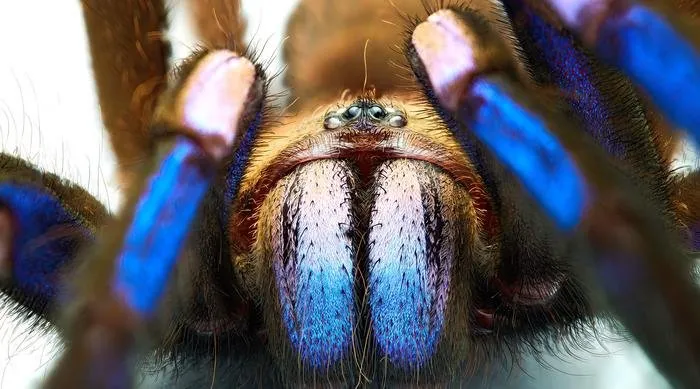
Most blue tarantula species are solitary, meaning they live alone except during mating season. They typically occupy their own burrows or territories. Some species may tolerate the presence of other tarantulas in their area, while others can be fiercely territorial, especially when resources are scarce. The mating process involves complex rituals, and the female often displays aggressive behavior toward the male after mating, sometimes even eating him. Social behavior in these spiders helps them survive and reproduce, but the specifics differ from species to species.
Blue Tarantula Conservation Status
The conservation status of blue tarantulas varies among different species, but many face threats due to habitat loss, the pet trade, and climate change. Understanding these threats and the conservation efforts in place is important for protecting these beautiful spiders.
Threats to Their Survival
The major threats to blue tarantula populations include deforestation and habitat destruction, which eliminate their natural homes. The increasing demand for these spiders in the pet trade contributes to their collection from the wild, which can significantly deplete populations. Climate change can also lead to shifts in their habitats and food sources, making survival more difficult. Wildfires and pollution further threaten their existence. It is important to be aware of these issues to help support their conservation.
Conservation Efforts
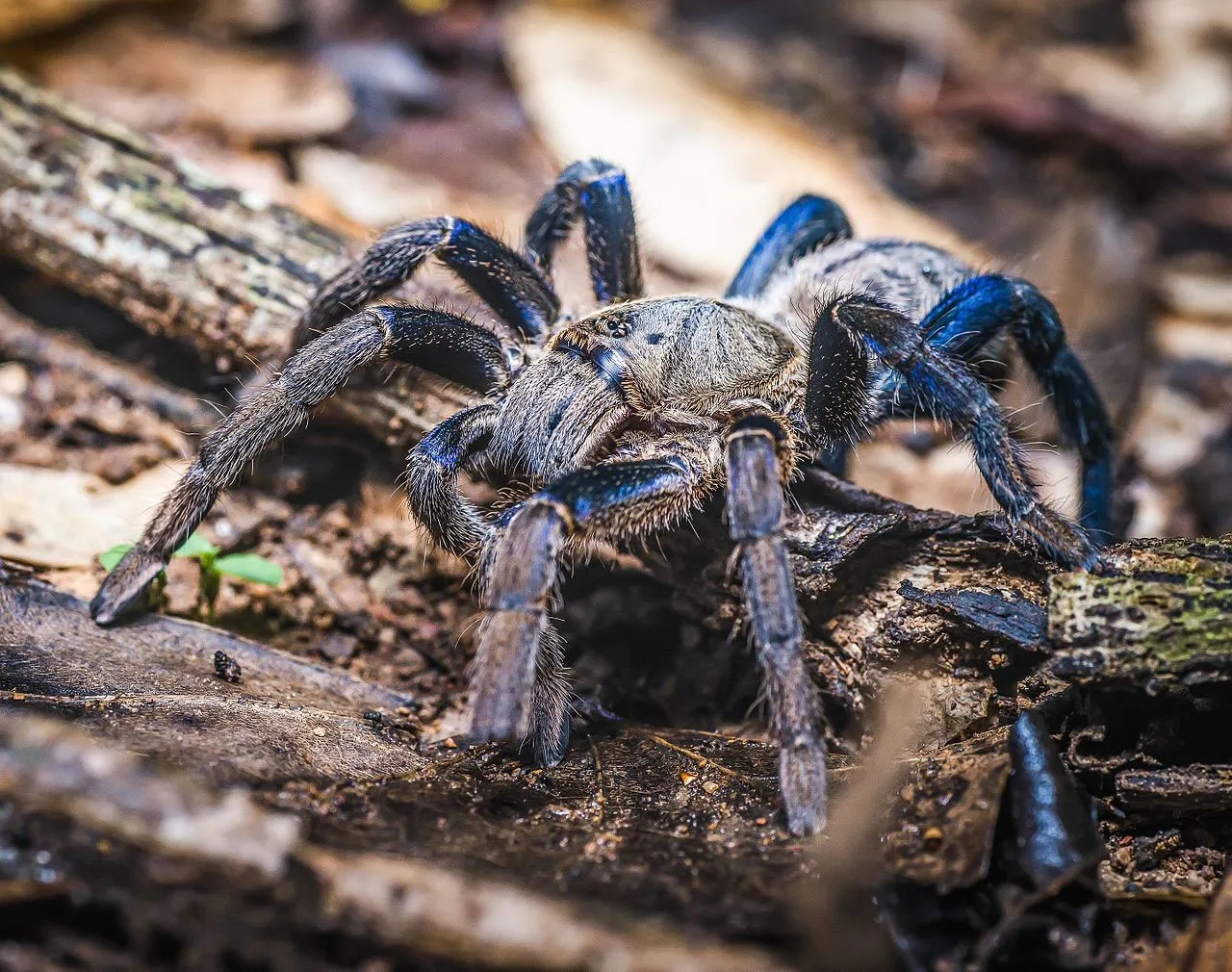
Conservation efforts include habitat protection and restoration, such as establishing protected areas and preventing deforestation. Stricter regulations on the pet trade can help ensure that these spiders are obtained sustainably and not collected from the wild. Public education and awareness programs can help people understand the importance of these spiders and the need to conserve their habitats. Research and monitoring programs are also critical to understand their populations. Supporting organizations and initiatives dedicated to protecting blue tarantulas can contribute to the long-term survival of these fascinating creatures.
Conclusion
Blue tarantulas are remarkable creatures, admired for their striking beauty and intriguing behaviors. From understanding their unique appearance and habitats to the challenges they face and efforts to protect them, it’s clear these spiders need our help. Whether you’re an enthusiast, a researcher, or simply someone who appreciates the wonders of nature, learning more about blue tarantulas is a step toward their conservation. By appreciating their beauty and understanding their needs, we can work together to ensure they thrive in their natural habitats for generations to come.
